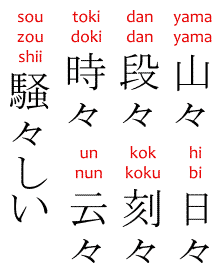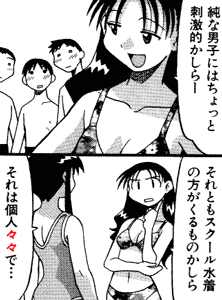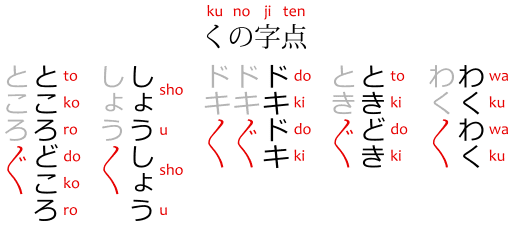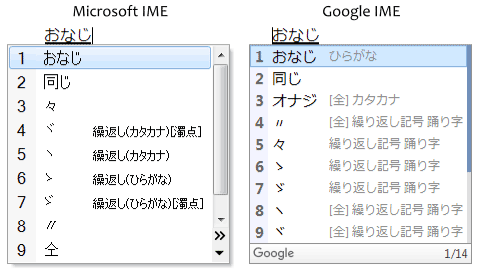In Japanese, the 々 symbol means the kanji 漢字 that comes before it should be repeated, e.g.: 人々 is the same as 人人, the 人 kanji twice. It's called noma ノマ, kurikaeshi 繰り返し, among other names.
Meaning
Again, the 々 symbol repeats the kanji that comes before it. It repeats only one single kanji character, not multiple. It doesn't repeat the reading of the kanji, so the same repeated kanji may be read differently. And it definitely doesn't repeat non-kanji characters.
Usage with Reduplication
The 々 likely exists because the kanji represent morphemes, and the Japanese language is full of words that feature reduplication of morphemes that kanji represent, which is when a morpheme repeated after itself in a word.
For example, in Japanese, a reduplication may have a plural meaning of the simplex word:
| Simplex |
Reduplication |
|---|---|
| yama 山 Mountain(s). |
yamayama 山山 (=山々) Mountains. |
| ten 点 Dot(s). |
tenten 点点 (=点々) Dots. |
| dai 代 Generation(s). |
daidai 代代 (=代々) Generations. |
A morpheme may be pronounced differently when it's suffixed to another. There are various such changes of pronunciation in Japanese, such as:
- koibito
恋人(こいびと)
Lover.
- rendaku 連濁: koi, hito 恋,人 became koibito こいびと, the hi ひ syllable became bi び, accented with a dakuten 濁点 (゛) diacritic.
- ikkoku
一刻(いっこく)
One instant.- sokuonbin 促音便: ichi, koku 一, 刻 became ikkoku いっこく, the chi ち syllable became a small tsu っ, which is called a sokuon 促音.
- han'nou
反応(はんのう)
Response.- renjou 連声: han, ou 反, 応became han'nou はんのう, the o お vowel became a no の syllable.
The 々 just means the same kanji is repeated, which means the morpheme it represents is repeated, which means a morpheme is suffixed to itself, which means the suffixed morpheme—here called the reduplicant—can be a affected by changes in pronunciation just like any other suffix and thus have a different pronunciation, and consequently reading, from the base morpheme it's suffixed to. For example:
| Simplex | Reduplication |
|---|---|
| hito 人 Person. People. |
hitobito 人人 (=人々) People. |
| koku 刻 Instant. |
kokkoku 刻刻 (=刻々) With each instant. |
| un 云 Saying. |
un'nun 云云 (=云々) So and so. |
Some notes on reduplication:
Just because a reduplication is a word, that doesn't mean its base morpheme is a word, too.
For example, although un'nun is a normal word used to say "he said so and so," "it was written so and so," or "this and that of [some subject]," a single un 云 doesn't seem to mean anything in modern Japanese.
Not all reduplicated end in the reduplicant, nor do they all start with a morpheme that will be reduplication. For example, some i-adjectives ending in ~shii ~しい contain reduplications:
- souzoushii
騒々しい
Noisy. - imaimashii
忌々しい
Annoying. - ririshii
凛々しい
Gallant.
Some other examples of reduplication with 々:
- samazama
様々
Various. - tokidoki
時々
Sometimes. - hibi
日々
Days. Everyday. - iroiro
色々
Various things. Stuff. - nakanaka
中々
Very. - tamatama
偶々
Accidentally. By chance. - dandan
段々
Gradually. - masumasu
益々
Increasingly. - tsugitsugi
次々
One by one. One after other. - tokidoki
時々
Sometimes. - komagoma
細々
In detail. - junjun
順々
In turn. In order. - sanzan
散々
Thoroughly.
Repeating Kanji
The 々 repeats the previous kanji. It only repeats the kanji immediately before it, so it can't repeat two kanji at once. For example, 御目々 equals 御目 plus 目 (御目目). It doesn't equal 御目 twice (御目御目).
- o-me
御目
Eye. Eyes. - o-me-me
御目々
Eyes. - o-te-te
御手々
Hands.
In a computer, it doesn't make much difference, but in hand-writing it's quicker and easier to write the noma 々 symbol, which takes only three strokes, than to write the same kanji again.
Since 々 repeats the kanji BEFORE it, there must be something before 々 for it to work, so there are no words in the Japanese language that start with 々.
Orthographic Errors
As a general rule, 々 is ONLY and ALWAYS used with reduplicated morphemes. This means that, for example, 人人 is always spelled 人々, and nobody is going to spell it 人人. If you can write 々, you should, but there are cases where it's considered orthographically wrong to use it.
Repeating Different Morphemes
The 々 shouldn't be used to repeat two different morphemes spelled with the same kanji in a same word, that is, if a kanji appears twice, but is read completely different each time (not a mere change of pronunciation difference), then you can't use 々.(detail.chiebukuro.yahoo.co.jp:あなたがたって)
For example:
- kyoubi
今日日 (correct.)
今日々 (wrong.)
In modern times. These days.
The word above SHOULD NOT be spelled as 今日々, because the repeated kanji represents different morphemes.
The word kyoubi is composed of kyou 今日, "today," and hi 日, "day." Since hibi 日々 means "days," and "today" can be paraphrased as "this day," I guess kyoubi means literally "these days" as in "in today's world."
Since kyou and hi are different morphemes, 々 can't be used.
It's worth noting that, to make matters worse, kyou is a single morpheme spelled by two kanji. This is also called a jukujikun 熟字訓 reading, in the sense that the 今日 kanji are exceptionally read as kyou when they're together.
Note that you can't divide kyou into two parts—you can't say 今 is read k~ and 日 is read ~you or something like that—because a morpheme is an indivisible unit. Although, considering that there are several words that mean "this X" and "this Y" that start with k~, it's possible k~ is a morpheme, but one that can't be represented in modern Japanese using kana 仮名.
Since we don't know which parts of kyou the 今 and 日 kanji are supposed to represent, there's no way to know if 今日々 is supposed to be k-you-you or ky-ou-ou. In any case, it definitely wouldn't be kyoubi.
Similarly:
Repeating Across Word Boundary
The 々 shouldn't be used to repeat a same morpheme across word boundary.(chiebukuro:々々の使い方は)
For example:
- minshu
民主
Popular sovereignty. (in which the people 民 are the lord 主 of the land.) - shugi
主義
Doctrine. - minshu-shugi
民主主義 (correct.)
民主々義 (wrong.)
Democracy.
The word above SHOULD NOT be spelled 民主々義, even though it's the same shu 主 twice, because it's a compound noun composed of two smaller nouns, and each shu 主 is in a different noun.
- seitokai-kaichou
生徒会会長 (right.)
生徒会々長 (wrong.)
Student council council president.
々々
Sometimes, 々々, literally 々 twice, is used in a word. This either means two kanji were repeated instead of one, or, in rare cases, that one kanji is repeated twice. This usage is considered incorrect (on top of ambiguous) and should be avoided.(chiebukuro:々々の使い方は)
Repeating Two Kanji at Once
Typically, 々々 means two previous kanji were repeated, rather than a single kanji being repeated twice. For example:
- hitori
一人
One person. - hitorihitori
一人一人 (correct.)
一人々々 (wrong.)
One by one. Each person individually.
You may find the word above spelled 一人々々, in which case it's read hitori then hitori again: hitori-hitori 一人一人, not as hitori then ~ri ~人 again twice: *hitori-ri-ri 一人人人.
Other examples:
- baka
馬鹿
Stupid. Idiot. - bakabakashii
馬鹿馬鹿しい (correct.)
馬鹿々々しい (wrong.)
Foolish. Absurd. Ridiculous.
- Context: a teacher brings a bikini to a school pool, gets reprimanded for it.
- {jun na} danshi niwa chotto shigeki-teki kashira~
純な男子にはちょっと刺激的かしらー
Is [it] too provocative for the {pure} boys, [I wonder]? - soretomo {sukuuru mizugi no} hou ga {kuru} mono kashira
それともスクール水着の方がくるものかしら
Or would [it] {[be more provocative]} if [it] {was a school swimsuit}}?- pin to kuru
ピンとくる
To click (in the sense of getting an idea). To have an epiphany.
To appeal someone greatly. To fit one's tastes perfectly.
- pin to kuru
- sore wa kojinkojin de...
それは個人々々で・・・
That varies from person to person...
Repeating One Kanji Twice
Albeit unlikely to happen ever again, the 々 has been used to repeat a single kanji twice before:
- Ryuugajou Nanana no Maizoukin
龍ヶ嬢七々々の埋蔵金
Nanana Ryuugajou's Buried Treasure.
Repeating Non-Kanji Characters
The 々 can't be used to repeat a non-kanji character, only kanji.
Symbols that repeat the previous character are called iteration marks. The 々 is an iteration mark for kanji, so it can only be used with kanji.
There are also iteration marks for kana 仮名 (hiragana ひらがな and katakana カタカナ), which are ゝゞヽヾ, plus some other symbols, like a long ku く-shaped one, but these are highly unusual compared to .
- kokoro
こころ
こ々ろ (wrong, こ isn't a kanji.)
こゝろ (right, but unusual.)
Heart. Mind. Soul.
Is 々 a Kanji?
In practice, the 々 looks like a kanji, as it's used to write words, and read like kanji, except it has no reading itself, unlike kanji, it just repeats stuff, so it's technically not a kanji, but some sort of symbol, a mark, a punctuation in Japanese language, except that, more technically, it's a character that came from China, so if we're going to be pointlessly technically technical, it is, indeed, a "Chinese character," a kanji 漢字.
In practice, it doesn't really matter if it's a kanji or not. Even the manji 卍 "swastika" is technically a kanji. What difference does that make?
Name
The 々 has several names.
In English, 々 is called repetition kanji, repetition mark, or kanji iteration mark. Note, however, that 々 is a symbol, a mark, and not a kanji character.
In Japanese, 々 is called:
- kurikaeshi
繰り返し
Because that's what it does. It "repeats," kurikaesu 繰り返す, stuff. - kurikaeshi fugou
繰り返し符号
"Repetition symbol." - odoriji
踊り字
"Dancing character." (maybe because it "skips" over writing a character.) - kasaneji
重ね字
"Stacking character." (for stacking two of the same thing.) - dou-no-ji-ten
同の字点
"Same-letter mark." - onaji
同じ
Because it's the "same." - noma
ノマ
Because 々 looks like the katakana noma ノマ.
How to Type
Normally, you don't need to type 々. If you type a word with repeated kanji like hitobito ひとびと, and try to convert it to kanji, you should get the choice to convert the hiragana to 人々, with the 々 mark in it already.
To type it alone, some IME's show it as a choice if you try to convert kurikaeshi 々. But since kurikaeshi can be kurikaeshi 繰り返し plus a lot of other words, the 々 symbol may be way down the list. Other names such as onaji 同じ, dou 同 and odoriji 踊り字 may also work.
Personally, I just type hibi 日々 and delete the 日. It's easier that way.
References
- 毎夜々々や馬鹿々々しいに使われる“々々”の使い方は - detail.chiebukuro.yahoo.co.jp, accessed 2021-08-04.
- あなたがたって漢字で書いたら貴方方ですか、それとも貴方々ですか?, accessed 2021-08-04.




No comments: